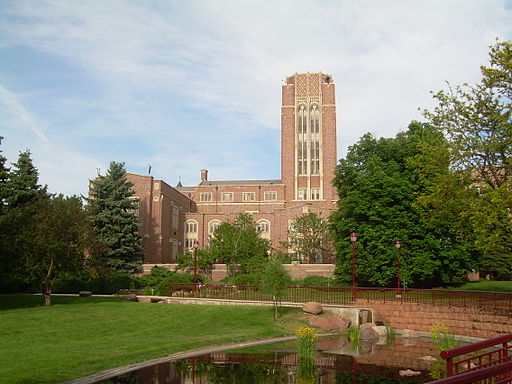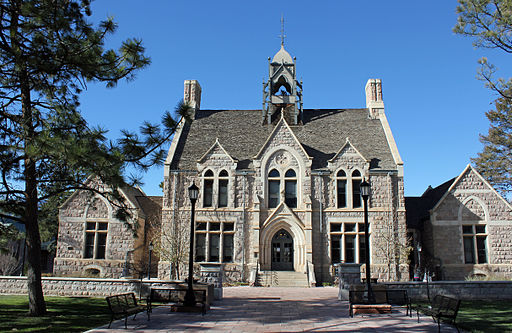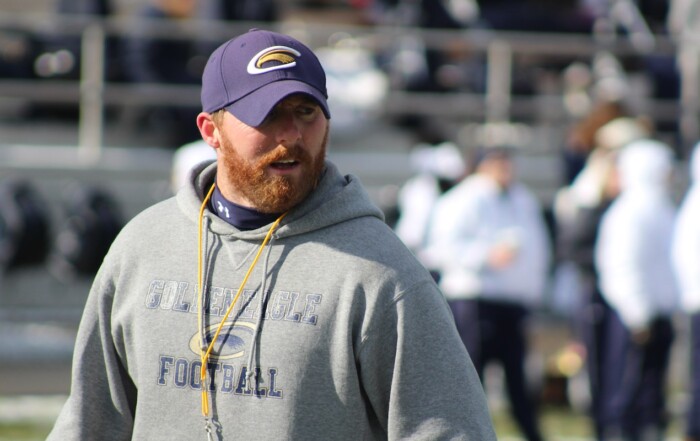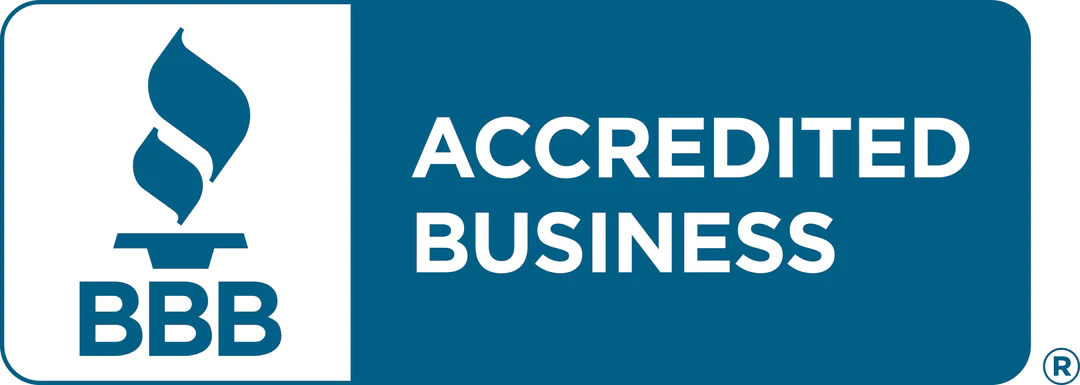College Admissions Tips and Guidance
Spotlight: Colorado Colleges

Explore Our Articles
Recent Posts
Popular Categories
Get In Touch
On Social
By Phone or Text
(617) 734-3700
By Mail or Email
1678 Beacon Street
Brookline, MA 02445
By Form
Educational Advocates
Our objective is to guide the family in finding options where the student will not only get admitted, but thrive and find success once on campus.
Spotlight: Colorado Colleges

CU Boulder Main Campus. PC: Nshervsampad CC-BY-SA-4.0 via WikiMedia
On a trip to Colorado recently with my family, I decided to take side trips to visit three Colorado colleges: University of Colorado Boulder (30,300 students), University of Denver (5,700), and Colorado College (2,025). Visiting large, medium, and small schools in three different parts of the state gave me a quick initial read on Colorado the place and its range of educational options.
CU Boulder is located right outside downtown Boulder, an appealing city of 100,000 ringed by mountains and canyons providing endless options for hiking, biking, climbing, and more. The city has a famous pedestrian mall, lined with flowers and over a thousand shops, restaurants, coffee shops, and breweries, along with art installations, street performers, and fountains.
The campus itself is built in a harmonious style–most buildings are made of local sandstone, with red tile roofs. Even though CU Boulder has a very large student population, it feels contained and almost cozy, with groupings of buildings surrounding grassy green quads.
The school is divided into eight different undergraduate colleges including the College of Arts and Sciences (with 70% of the university’s students), schools for business, education, music, media and communication, environmental design, and engineering and applied science. Even though it has a huge number of students, our tour guide explained that students find ways to make it feel smaller: by meeting people in their major or school, by choosing to live in a living learning community (LLC), by joining a fraternity or sorority, by joining one of the 500 (!) clubs, or by playing a sport, at the varsity, club, or intramural level. The school is a tier one research university with some top-ranked, innovative programs, including its program in environmental science and its College of Engineering, which is ranked 18th in the country. The university provides a range of academic supports, including free peer tutoring freshman year, a writing center, and major-specific librarians who can guide students doing research papers.
During freshman year, when students are required to live on campus, they can take a class housed in their dorm, giving them an opportunity to get to know the people living around them. We saw one of the first-year dorms, which stood out for its large common area with a ping pong table. Sophomores, juniors, and seniors can live on campus in apartment-style housing; but many choose to live off campus in the nearby University Hill neighborhood, which has a range of bars, pizza shops and coffee shops.
In terms of the social scene, our tour guide indicated that it can be whatever you want it to be. He told us that he’s part of a fraternity, as 13 percent of students on campus are. But many others center their social lives around enjoying the outdoors. During the winter, students can take a ski bus to one of Colorado’s many mountains. The university also has an active outing club, where students can sign up for anything from mountain biking trips to rock and ice climbing to fly fishing, along with training on avalanche safety and wilderness medicine. Closer to home, students take advantage of the beautiful and expansive Rec center, including basketball courts for intramural, club, and pick up games, an ice rink that students can use, tennis courts, a cafe, and a large workout area. Most popular on the hot day I visited was the outdoor pool, in the shape of a buffalo, CU’s mascot. Our tour guide explained to us that he transferred to CU Boulder from a commuter college in his home state. At CU Boulder, he found what he was looking for: a place with a rich campus life, in a great location, with many different offerings along with various ways to make the university feel smaller than it is.
***
The University of Denver, eight miles from downtown, is in a

University of Denver campus. PC: The original uploader was CW221 at English Wikipedia., CC BY-SA 3.0, via Wikimedia Commons
residential neighborhood peppered with a few different groupings of businesses that appeal to college students, including coffee shops, pizza places, and bars. The campus itself is 125 acres, with a range of grassy quads where students hang out, ringed by varied but harmonious groupings of buildings.
A private university, DU is on a quarter system, with a six-week winter break. Our tour guide emphasized that the quarter system makes it easier to take more classes, and thus to double or even triple major. Students can take additional classes and catch up on requirements during the summer quarter. Almost all classes are taught by faculty, with an average class size of 24 students. Known especially for its programs in international relations and business, the school is divided into seven different colleges. Several of the colleges, including business and law, allow students to do combined, accelerated dual-degree programs where they end up with both a bachelor’s degree and a master’s or doctorate degree in a given subject. Special opportunities include an accelerator program for student entrepreneurs, where students can get grants to explore ideas; the chance to invest live money through the business school’s investment center; and the chance to go on winter study trips with faculty. Our guide, for instance, had recently returned from a two-week trip with a professor to Ireland to study leadership. DU offers an honors college to which students apply to. But whether in the honors college or not, our guide emphasized that professors want to get to know their students, and are very approachable and willing to help students find both research opportunities and internships.
For me, the library at DU stood out as a place that draws students not just for quiet studying, but for academic support, collaborative work, and even fun and games. Called the Academic Commons, it combines the features of a typical library with several student support offices including a writing center, a language skills center, and a place where students can get research help. Everything is centered around an appealing open gathering place, with a cafe, a variety of board games, and tables where students can sit and work together.
DU has also just added a mountain campus, 720 acres in the wilderness where students can do field research or take multi-day immersion classes. They can also gather to learn wilderness skills, leadership skills, or just take a break from school work and do some yoga, hiking, or rock climbing.
In terms of residential life at DU, students must live on campus for the first two years. After that, they can live off campus in one of the residential neighborhoods nearby. Our tour guide reported that rent rates are quite reasonable. On campus, there are a range of options, including two brand-new freshman dorms with lounges on each floor and access to kitchens; as well as suite-style and apartment living for older students. Some of the options are more expensive than others. A variety of LLCs are also available, including ones focused on social justice, environmental sustainability, and innovation and entrepreneurship. Four fraternities and sororities also have housing on campus; about a quarter of students are involved in Greek life.
DU has clearly invested a lot of money in its campus over the past several years, with a new food-court-style dining hall, comfortable campus center with a roof deck and bar for students over 21, and a stylishly decorated career center. Students are encouraged to work with the advisors at the career center from their first year; 85 percent end up completing at least one internship, and the alumni career network is strong. The university also offers career centers that are school-specific (ie, a separate one for the business school or school of international relations).
As at CU Boulder, skiing and other outdoor activities are a big part of life at DU, with a bus to ski mountains each weekend in the winter. On campus, there are 20 intramural teams, 30 club teams, and 120 clubs, including, our guide told us, a grilling club where students cook up food on the quad to share with others. Students enjoy the annual winter carnival, going to sports games (especially ice hockey, in which DU won the 2022 NCAA championship), hanging out at nearby Washington Park or heading into downtown Denver to hear music or go to restaurants or bars.
****

Cutler Hall PC: Jeffrey Beall, CC BY-SA 3.0, via Wikimedia Commons
Colorado College is the most well-known of the seven colleges in the country that teach on a block plan–meaning you take one course at a time. CC’s courses are taught in 3.5 week blocks, with a 4-day break in between. Students are in class every weekday, usually from 9-12, and again in the afternoon if they’re doing a lab science. The fact that students are taking only one class allows for experiential exploration to be built in to the curriculum: for instance, students studying outdoor journalism have spent a week in Santa Fe interviewing authors and editors at Outside Magazine; students studying ecology have spent a week camping in the wilderness in Arizona. The block plan appeals to a specific kind of person and student. As the person who led our information session said: “Do you lose yourself in a topic? Do you like to throw yourself into learning? You might be a good person for this.” Depending on the block, the work can be very rigorous and intense, and the pace is necessarily quick. Still, CC has a 97% retention rate, so once people choose the block program, most of them stick with it.
Seeing each other 15 hours a week at a minimum means that students get to know both their professors and their classmates very well. Each department has its own house, and students and professors tend to gather there for coffee or to collaborate on projects; also, professors are given stipends so they can invite students out to dinner. Class sizes are capped at 25, with 16 being the average. Each student has two advisors–a faculty advisor and a staff advisor–to help them navigate the block program and life as a college student. Students must fulfill nine distribution requirements to graduate, including two blocks that acclimate them to the block program, interdisciplinary scholarship, and the research and writing skills they will need at CC. Colorado College is primarily a liberal arts school, but it also offers pre-professional programs in business, engineering, health, and law. Students at CC are given a lot of freedom in both their studies and how they take their exams, but they are asked to abide by a strict honor code.
Though the morning class schedule tends to be intense, students can take more relaxed “adjunct” classes in the afternoon–maybe something fun they’ve been wanting to learn like embroidery, or a class in a language they’ve been wanting to practice. Our tour guide reported that students love spending their free time hanging out on the quad, lying in hammocks they’ve set up or playing games. The school fitness center is open to all, and has a view of nearby Pike’s Peak and the Front Range, with its over 400 miles of hiking and biking trails. Runners, hikers, and bikers can also hop on a trail that runs right through campus. During block breaks, many students head out on one of the more than 200 wilderness trips per year offered by the Outdoor Education department (hiking, kayaking, climbing, whitewater rafting, backcountry skiing, and more). Students can also get to ski mountains on weekends by bus. Students are required to live on campus for three years; for their senior year they can live in one of Colorado Springs’s residential neighborhoods, many of them craftsman-style. The city is Colorado’s second biggest, after Denver, and, with the US Air Force Academy within its limits, is a mix of liberal and conservative, funky and straightlaced. Students can walk downtown in about 10 minutes, to a range of coffee shops, restaurants, bars, and shops.
We covered a lot of ground on the trip, but wished we could have also gotten to the Colorado School of Mines, a public university in Golden that focuses on many aspects of science and engineering (including mines), and to Colorado State University, a public university a bit smaller and less expensive for out of state residents than CU Boulder, in the town of Fort Collins (apparently the model for Disney World’s main street). We’ll have to save them for the next trip.








